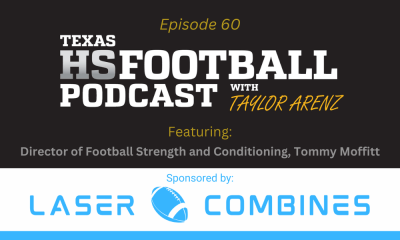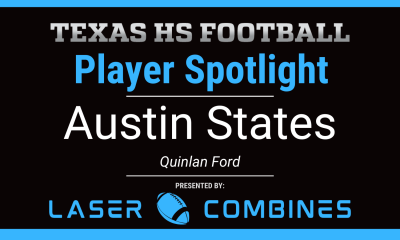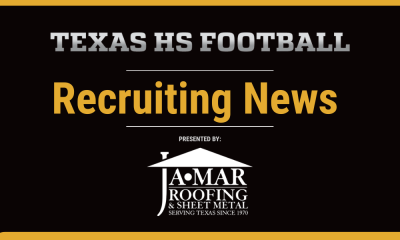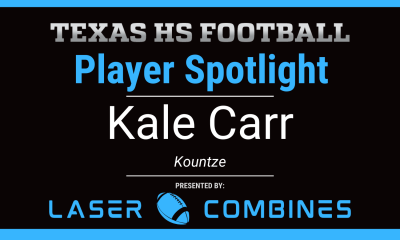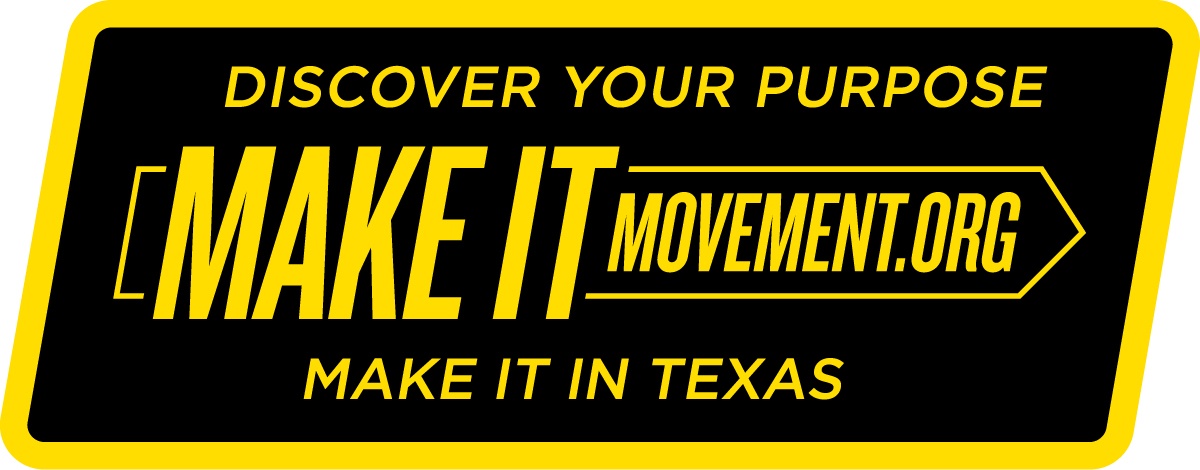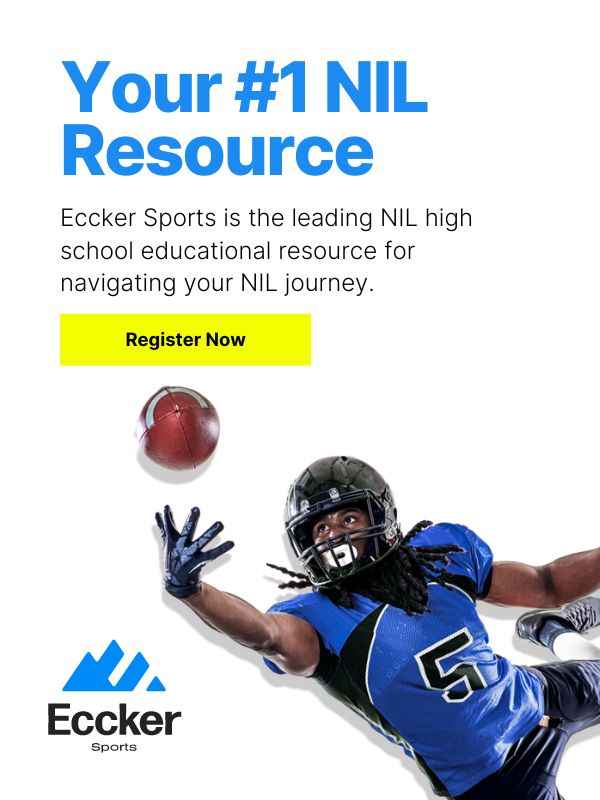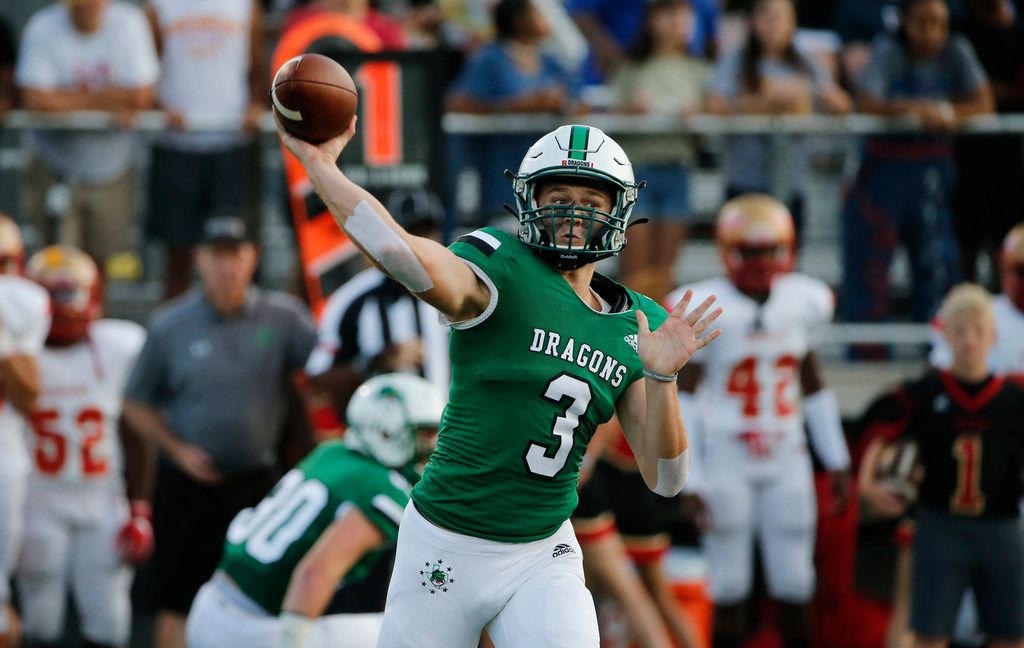
Playing Quarterback at the High School level isn’t what it used to be. Going no huddle and up-tempo puts a lot more on a Quarterback than one might think as well as the time commitment necessary to be able to handle everything that will come his way during the game. Let’s take a look at what a typical (game) week in the life of a Quarterback looks like.
Saturday
The Quarterback is responsible for watching the previous nights’ game and making notes of what they saw good/bad as it related to their performance by grading each play. The upcoming opponent’s film has been loaded and shared so that he can start watching to get an idea of what they do before Sundays meeting with the Offensive Coordinator (OC).
Sunday
Sunday evenings are reserved for the Quarterback and The QB/Offensive Coordinator to meet.
Typically the previous game is gone over first. Grades and point standings are given by the position coach and each play is dissected with the OC asking the QB what they did well/what they needed to do better for each play and finally, how they graded themselves compared to the position coaches grade. A list is made of what things the QB needs to work on improving during the upcoming week of practice.
Once the previous game has been “put to bed” the attention turns to the upcoming opponent. At this point the OC has a “working” game plan of the things he wants to practice and run during the week. This game plan (by formation only at this point) is reviewed and explained to the QB with expected fronts and coverages highlighted in yellow. Once completed the OC and the QB watch cut-ups of the upcoming opponent by formation. This helps to give the QB an understanding of how they will defend each formation and why each play has been selected for the game plan.
Finally, the Coach goes over the film by Down & Distance and Field Positon making note of the pressures (blitzes) used by the opponent and when.
Monday
Once the school day is over the offense (including the QB) meets to watch film of the previous game. Grades are given, positives and negatives are addressed, and updated depth charts are usually posted.
A little film of the upcoming opponent is usually shown to give the entire offense a look at what they can expect this week.
Once film has concluded, the team gets a lift in before heading out to the practice field. Monday practices are typically used as a walk through to show the team what they will see and what will be run against those looks the opponent will give on Friday night.
Mondays are also typically concluded by doing some running. Total duration of practice on Monday is usually around two hours.
Tuesday
After school, study table and film of upcoming opponent are generally shown before heading out to practice.
Tuesday practice is usually two and a half hours broken up into 5 minute increments. The focus on Tuesday is for the Defense to prepare for the opponents Offense. This allows the QB to get a lot of individual work with his position coach. Things such as drops, delivery, avoiding pressure, making the throws that the QB is having trouble with at that time, etc. A segment at the end of practice for working on picking up pressure with the OL and the RB is always incorporated on Tuesdays as well as walking through how the OL will block up the run game with the QB and RB’s.
Wednesday
After school, film and then a lift are done before practice starts. Wednesday is Offensive day and the QB will have his work cut out for him. Pre-Practice is the time for the QB to go over pressure pick –ups with the OL and RB’s. The QB is placed in some bad play calls during this time so that he has to check into the best protection to pick up that particular pressure.
Some individual drills usually get things started after stretch. Throwing routes on air (with garbage cans used as defenders for QB’s and WR’s to understand where defenders will be) and concepts on air get the QB’s arm warmed up. Following this a segment or two of Run Exchange is done with the Center and the RB’s to work on proper action and execution. Next up is 7/7’s, this is running skill players on pass concepts vs. a scout team running the defensive looks of the upcoming opponent. Typically, if you are a no-huddle, up-tempo team you can get two plays per minute, sometimes three. After a brief break for Special Teams, it’s time for Inside Run. This drill is made up of OL, RB’s, and QB’s vs. DL and LB’s running the defensive front of the upcoming opponent. Team Offense usually finishes up practice working on a specific situation such as 1st and 10 plays, Red Zone plays, etc.
Conditioning for a Wednesday is a 2-minute offense drill where the QB gets to call the plays. This is a high tempo, chaotic endeavor that allows the QB to learn to operate under pressure while calling the plays he feels comfortable with. This is turn gives the OC a good feel for what the QB really knows and likes to run.
Thursday
Final amendments are made to the game plan and gone over with the QB during his lunch break. Things he doesn’t like or doesn’t run well are taken out.
After school, study table and more opponent film are gone over before heading out for a walk- through practice. This time, during film personnel are looked at and determined who if anyone we need to exploit.
Walk through is used primarily to review Special Teams but also used for brushing up and polishing up the plays that are going to be run the next night. The QB is made to check some plays due to changing front or coverage and /or pressure.
Before the QB leaves for the evening a written test is handed out to him to complete before lunch on Friday.
Friday (Game Day)
Lunch time on Friday is reserved for the QB and the OC. They go over the written test, review the game plan, and the OC gets the QB’s four or five favorite plays for the night. This helps the OC to know, in a pinch, which plays the QB feels most comfortable with. After school gets out the team heads to the locker room to get ready for another walk through before the ore-game meal is served.
Once everyone returns from the pre-game meal the offense meets to review all the plays for the evening and the QB leads the chalk talk. Diagraming and showing what everyone is supposed to do on each play. This helps to solidify in his mind the offensive game plan.
Once pre-game warm-ups have concluded it’s time for Kick-Off!
Let’s take a look at what typically happens between offensive plays through the eyes of a Quarterback using the time on the Play Clock:
:25 QB quickly moves to where the ball is spotted while looking to the sideline for the play.
:24 QB finds signal caller and gets personnel for next play and echoes out to players on field.
:23 QB then gets signal for formation and play.
:22 QB echoes out formation to skill players so they can get lined up quickly.
:21 Skill players look to QB to get signal for play.
:20 QB then reads the coverage to determine if there may be a blitz coming.
:19 He then takes a look at the front to read LB’s to see if they are tipping anything off.
:18 From the look of the 3rd and 2nd level the QB determines which Pass Protection to use.
:17 QB, through codes, gives the Offensive Line the Pass Protection to be used.
:16 Offensive Linemen communicate with each other to determine who has who.
:15 QB, again through codes, tells the OL when the ball will be snapped.
:14 QB starts cadence.
:13 (Safety starts rolling down and an OLB walks up to give a 4-man side defensively).
:12 QB to self, “A blitz is coming, I’ve got to change protection!”
:11 “Easy, Easy!” (This gets the OL’s attention that something is going to be changed).
:10 “Roger, Roger!” (This lets the OL know that they will now be sliding their protection).
:09 QB gets set in his Shot-Gun position and starts cadence.
:08 Ball is snapped!
QB receives snap, takes his drop while his eyes are on the 2nd & 3rd level defenders as he goes through his read progression. The pressure came where the QB thought it would so he is protected, but must always “feel” for pressure as his eyes are down field, always on the ready to move and buy some time to get the ball off. The QB’s first read wasn’t open, which he determined on his first step in drop. Eyes went to 2nd read on his third step and the crossing route is open. As the QB hits his 3rd step he sticks it in the ground, and steps forward to throw all the while keeping in the back of his mind that his shoulders need to be parallel to the ground throughout drop and throw. There is an ILB between himself and the WR so he must put a little “air” on it to get over ILB’s head and drop it down to the WR on the run or he must be able to buy another second until that WR clears the ILB.
Ball is thrown and caught for a 16 yard gain.
(All of these things have been gone over during the week of preparation leading up to these moments)
:25 Repeat until offense scores!
Saturday
The week starts all over again.
Brought to you by:



